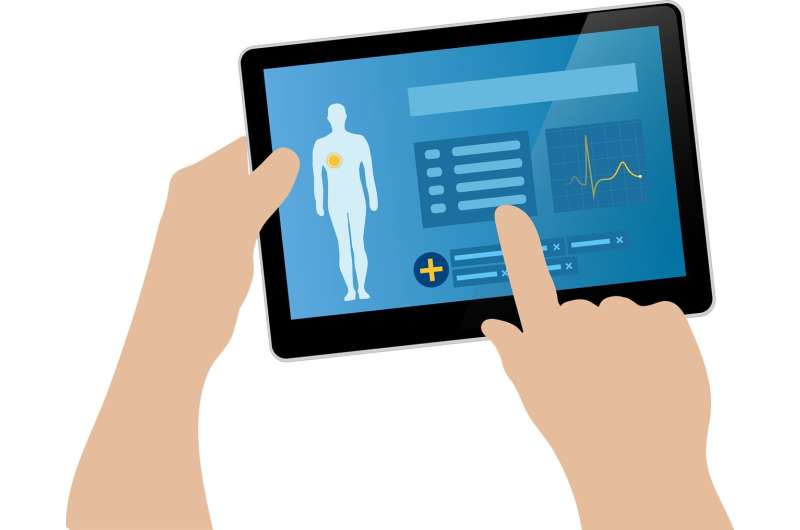Credit: CC0 Public Domain
Primary care health workers now have a guide for conducting remote consultation of suspected COVID-19 patients, developed by a team of researchers from Singapore and the UK.
During the COVID-19 pandemic, face-to-face examination of patients has been restricted in many countries as people self-isolate at home, leading to an increasing demand for telemedicine.
To help doctors adapt to the need for more remote assessments, a team comprising Associate Professor Josip Car at the Nanyang Technological University, Singapore (NTU Singapore),Professor Trisha Greenhalgh from the University of Oxford and Professor Gerald Koh at the National University of Singapore collaborated to develop a guide.
The work was published in peer-reviewed medical journal The BMJ in March, and has since been incorporated in the UK-based National Institute for Health and Care Excellence (NICE) rapid guideline on COVID-19, on managing suspected or confirmed pneumonia in adults in the community.
NICE provides authoritative guidance for appropriate treatment and care of patients within the National Health Service in England and Wales. Its resources are widely referred to by clinicians around the world, including Singapore.
The guide is expected to be a helpful tool for primary care health workers, as doctors, clinics and hospitals embrace telemedicine during the pandemic.
In Singapore, the usage of telemedicine has picked up, with the government encouraging the use of video consultations for several chronic conditions, to promote safe distancing and to reduce the risk of transmission of the coronavirus.
Assoc Prof Carwho is with NTU's Lee Kong Chian School of Medicine said, "We can expect to see an increasing shift from in-person consultation to telemedicine in the future. It is therefore important for clinicians to have clarity on good practice and our guideline addresses the urgent need by providing a broad orientation to a COVID-19 consultation, including safety net advice for patients."
Trisha Greenhalgh, who is Professor of Primary Care Health Sciences at Oxford University, said, "We've long known that telemedicine can help doctors save money and time. Yet face-to-face consultations have remained standard operating procedure and the 'go-to' option. Now, COVID-19 has dramatically altered the risk-benefit balance in video versus face-to-face consultations. Suddenly, doctors need to become confident at consulting patients via video. Our work offers evidence-based advice from an international team which we hope can provide some clarity for those in the primary care service."
The guide advises on how to conduct a 'query COVID-19' consultation remotely, how to choose between telephone and video appointments, questions to ask, considerations when arranging follow-up, and next steps. A visual summary is also included (see Notes to Editor).
For instance, the guide spells out how doctors should ask a patient to try to talk in full sentences in order to check on their respiratory function, since the inability to speak in complete sentences is common in severe illness.
It also highlights the need for doctors to look out for the general demeanor of a patient over video. Decisions and actions are also detailed, which includes instructions to arrange for immediate medical help when red flags for COVID-19 like severe shortness of breath at rest, or pain or pressure in the chest is reported by patients.
The guide was written based on a mix of COVID-19 published and unpublished research findings—the majority of which are from China and from the World Health Organization (WHO) guidance.
The team also conducted a poll of 50 medical professionals from countries including United Kingdom and Singapore, and leveraged findings from earlier related literature.
More information: Trisha Greenhalgh et al. Covid-19: a remote assessment in primary care, BMJ (2020). DOI: 10.1136/bmj.m1182
Journal information: British Medical Journal (BMJ)
Provided by Nanyang Technological University
























